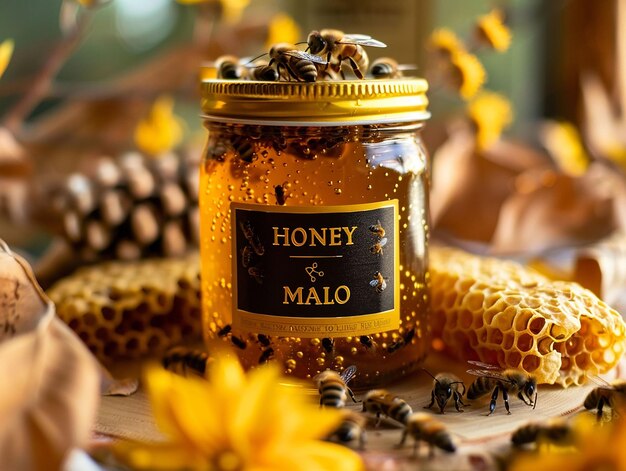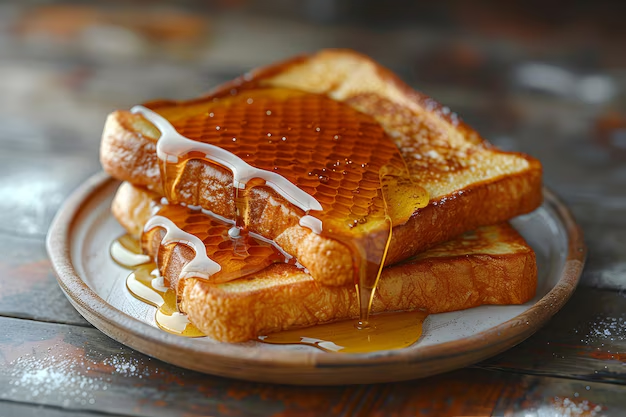
Creamed honey is a delightful variation of this natural sweetener that offers a creamy, smooth texture and a slightly different taste compared to its liquid form. If you’re a fan of natural sweeteners but haven’t explored this unique product, you’re in for a treat. In this article, we’ll dive deep into everything you need to know about it, from its creation process to its health benefits and uses in everyday meals.
What is Creamed Honey?
This type of honey has been processed to control the crystallization process. While all honey naturally crystallizes over time, this version is designed to form smooth, fine crystals, resulting in a creamy consistency rather than the gritty texture that can develop in regular varieties. This method produces a spreadable, velvety texture that’s perfect for spreading on toast or using in recipes.
Texture and Flavor
Unlike its liquid counterpart, which is runny and often sticky, this sweetener offers a smoother, more controlled spread. Its flavor is typically more delicate than that of regular honey, which can vary greatly depending on the floral source.
How is Creamed Honey Made?
The Process of Creaming Honey
It is made through a process called controlled crystallization. The steps include:
- Seed Honey: First, a small amount of finely crystallized honey, often referred to as “seed honey,” is mixed into a batch of liquid honey. This encourages the entire mixture to crystallize uniformly.
- Temperature Control: The mixture is then stored at a controlled temperature, usually around 57°F (14°C), for about a week. This slow process allows fine crystals to form, resulting in a smooth and creamy texture.
- Stirring: Gentle stirring ensures even distribution of the seed honey, leading to a consistently creamy product.
This method is a natural way to produce it without adding any preservatives or artificial ingredients.
Variations in Recipes
While the basic process remains the same, some recipes may involve adding flavorings like cinnamon, vanilla, or fruit extracts to create flavored versions. This adds a gourmet twist to the traditional spread.
Creamed Honey vs Liquid Honey
There are several key differences between these two forms of honey that are important to understand when deciding which one to use.
Texture
- Creamed Honey: Thick, smooth, and spreadable. It won’t drip like its liquid counterpart, making it ideal for spreading on bread or toast.
- Liquid Honey: Runny and sticky, which makes it perfect for drizzling on foods or stirring into drinks.
Taste and Appearance
- Creamed Honey: This variant tends to have a milder taste. The controlled crystallization process results in a lighter color as well.
- Liquid Honey: The flavor of this type is often stronger and can vary widely depending on the floral source of the nectar.
Shelf Life
Both forms of honey have long shelf lives, but the spread maintains its texture over time, while the liquid variety eventually crystallizes into a gritty texture unless stored properly.
Health Benefits
One question often asked is, “Is this version healthy?” The short answer is yes! It retains all the health benefits of raw or liquid honey because it is not exposed to heat during processing, meaning its enzymes, antioxidants, vitamins, and minerals remain intact.
Nutritional Benefits
- Rich in Antioxidants: Honey contains antioxidants that help protect the body from free radicals, which can cause cell damage.
- Natural Sweetener: This form provides a healthier alternative to refined sugar, offering sweetness without the negative health effects of processed sugar.
- Wound Healing: Like raw honey, this version may offer wound-healing properties due to its antibacterial effects.
- Digestive Health: Honey has been used traditionally to soothe digestive issues, and this form is no exception.
While it may not differ nutritionally from liquid or raw honey, it offers the same natural benefits in a more convenient and spreadable form.
Creamed Honey vs Raw Honey
When comparing these two, it’s important to note that this product is often made from raw honey. The key difference lies in texture, with raw varieties being unprocessed and retaining all their original enzymes and nutrients, while the creamed version is processed to achieve a smoother texture.
- Raw Honey: Pure, unprocessed, and often considered the healthiest form of honey.
- Creamed Honey: Processed to control crystallization but still retains all the nutritional benefits of raw honey.
Creative Uses and Recipes
Looking for ways to incorporate this sweetener into your meals? Here are some creative ideas:
Spread on Toast or Bagels
A classic use for this delightful treat is as a spread on warm toast or bagels. Its smooth texture makes it easy to spread, and it pairs perfectly with butter for a rich, indulgent breakfast.
Sweeten Tea or Coffee
Add a spoonful to your morning tea or coffee for a naturally sweetened drink with a creamy texture.
Drizzle on Yogurt or Oatmeal
For a healthy breakfast, drizzle it over yogurt or oatmeal. It adds a touch of sweetness without the mess of liquid honey.
Recipe for Creamed Honey Butter

Looking to get even more creative? Try making creamed honey butter!
- Ingredients: ½ cup of creamed honey, ½ cup of unsalted butter, softened
- Instructions: Beat the butter until light and fluffy. Gradually add the honey and continue to beat until smooth. Use it as a delicious spread for biscuits, pancakes, or waffles.
Summary
This delicious alternative to liquid honey offers a smooth, spreadable texture. It retains all the health benefits of raw honey while providing a unique flavor profile that many find more versatile. Whether you’re spreading it on toast, adding it to tea, or incorporating it into a recipe, this sweet treat is a healthy addition to your diet.
FAQs
This type is regular honey that has been processed to control crystallization, resulting in a smooth, spreadable texture. Regular honey, on the other hand, can crystallize into a gritty texture over time.
To make it, mix seed honey with liquid honey and store it at a cool temperature until it forms fine crystals. Stirring occasionally ensures smoothness.
Both forms offer the same health benefits, including antioxidants, antibacterial properties, and digestive health support. The difference lies mainly in texture and use.
Yes, this sweetener can be used in cooking, baking, and as a spread. It works particularly well in recipes where a thicker honey consistency is desired.



